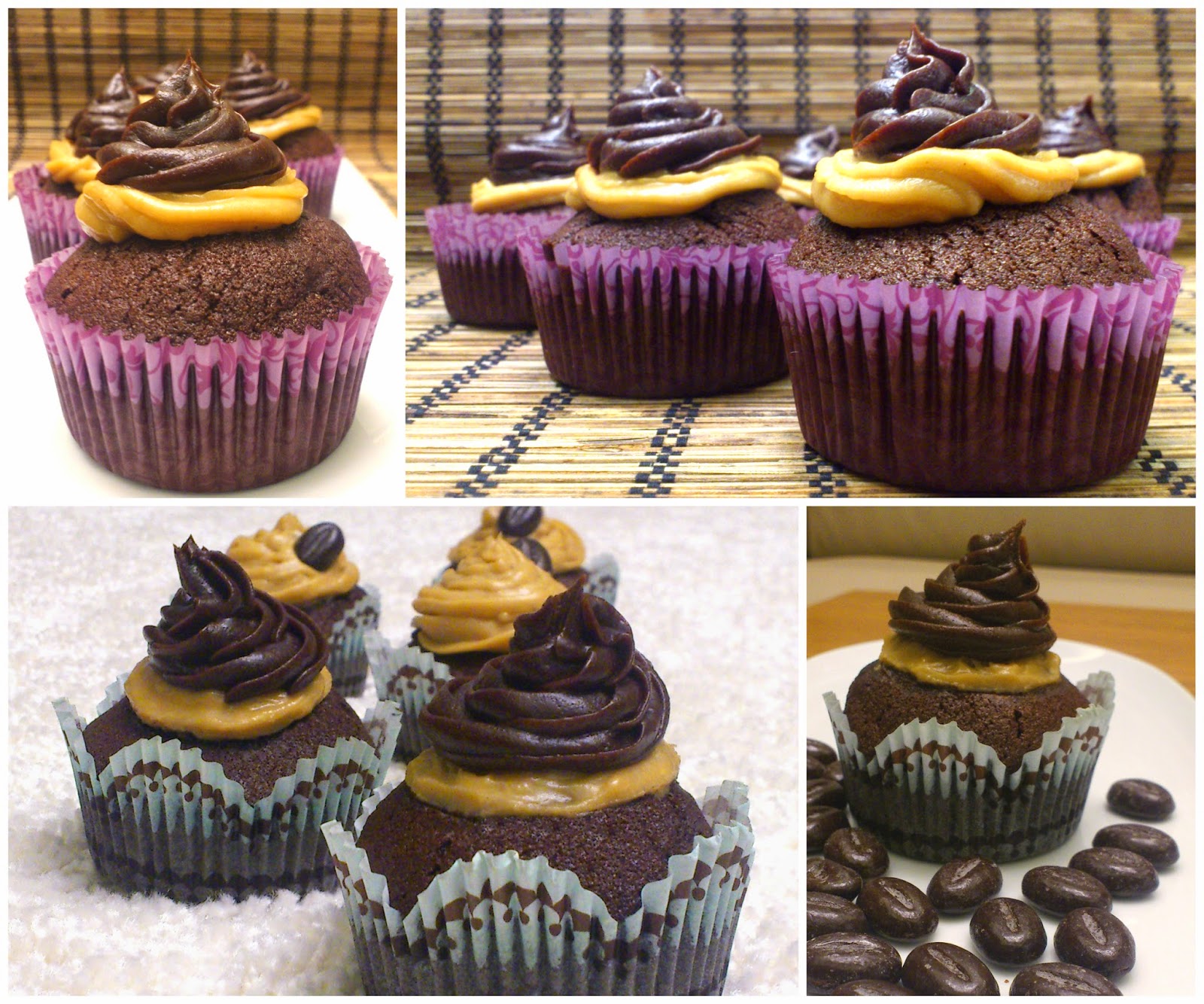Long time no see... ! I'm enjoying my (probably) last long summer holiday, and although I still find time for cooking and baking, I moved, left my kitchen behind and had to start adjusting to a new one. Fun. As I'm moving long-distance, I got to do some shopping - new trays, cupcake cases, mixer, measuring cups... and I also got to know my new neighbour who seems to be interested in tasting my culinary experiments, and, in exchange, offered to supply me with his home-grown tomatoes.
Since my mum and grandma love to make cherry jam and the pantry at my parents' house is slowly filling up with dark red jamjars, I got inspired... I've decided to bake some Black forest (Schwarzwälder) cupcakes for my high school reunion and for Honza's gaming session.
Little did I know that my cupcakes cannot be officially called "Black forest"... The original Black forest cake has to contain cherry brandy, at least that's what the German Leitsätze für Feine Backwaren (Guidelines for Fine Bakery Products) say. According to these "guidelines", the cherry brandy flavour has to be "clearly distinguishable" if the "fine bakery product" is to be called schwarzwälder.
My cupcakes don't contain any cherry brandy or cherry brandy flavourings... Be aware that the bellow described recipe cannot therefore be officially considered "black forestish". Nonetheless, despite my ignorance of German traditions and guidelines, the cupcakes met with positive critique.
 |
| Schwarzwälder Choco-Cherry Cupcakes with Sour Cream Stracciatella Frosting - picture taken by Honza - |
Ingredients (makes for about 12 medium cupcakes)
Cupcakes75 g plain flour
70 g butter
60 g quality dark chocolate
1/2 cup brown sugar
1/3 cup cocoa powder
1/3 cup full fat milk
12 tsp. sour cherry jam
0.5 tsp. baking soda
0.5 tsp. baking powder
0.5 tsp. salt
1 tsp. vanilla extract* (not the Dr.Oetker clear essence!)
1 large egg
*the only good vanilla extract I discovered in CZ/SK so far is the one from Marks and Spencers, in the UK I like the one from Dr.Oetker (brownish and thick, available with, or without the vanilla seeds)
Sour Cream Stracciatella Frosting
150 g sour cream (30% fat)
100 g mascarpone cheese
75 g quality dark chocolate (grated)
1/3 cup powdered sugar
3 dark cherries for decoration
Directions
Cupcakes
1. Preheat oven to 180°C
2. Beat egg with sugar
3. Melt butter with chocolate and add it to the egg and sugar mixture
4. Mix the remaining dry ingredients and slowly add the dry mixture and milk to the egg and sugar mixture and mix thoroughly until smooth
5. Line a cupcake/muffin pan with cupcake cases and fill each one a bit over 1/2 full
6. Bake for about 20 minutes (toothpick inserted in the centre should come out clean)
7. Let the cupcakes cool and use a small paring knife to cut a cone out of the center of each cupcake, save the top part
8. Fill each cupcake with a spoonful of sour cherry jam and top with the piece you removed
Sour Cream Stracciatella Frosting
1. Mix the sour cream with mascarpone
2. Add powdered sugar and beat thoroughly until smooth
3. Gently fold in the finely grated chocolate
4. Refrigerate for at least 30 min before frosting the cupcakes








